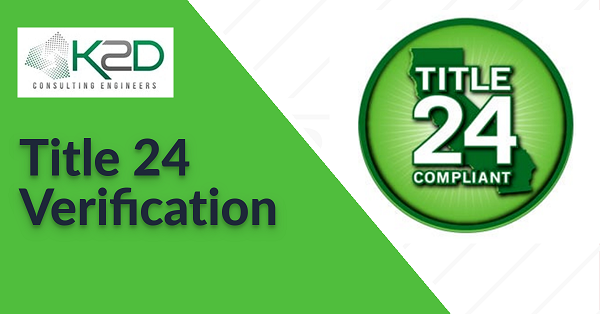
When Title 24 legislation was passed in 1978, it was done so to raise the standards of energy efficiency by requiring all existing and new buildings in California to meet certain levels of energy efficiency requirements.
Title 24 guidelines apply to all new construction – including existing structures. Hence, any alterations or renovations to existing homes or buildings (new water heater system, air conditioner, lighting systems, etc.) must meet the standard for Title 24 compliance.
How is Title 24 Compliance Verified?
There are essentially two methods for Title 24 compliance verification – the prescriptive method and the performance method. Both approaches have their advantages but using one over the other; however, could lead to higher overall construction costs.
The Prescriptive Method
With a reputation of being the simpler of the two methods, the Prescriptive Method simply requires that the minimum energy standards for a structure (it’s windows, lighting system, thickness of walls, plumbing system, etc.) meets what is required by the Title 24 code.
With this approach, designers and architects merely follow a chart for the minimum thresholds that must be reached.
Once the installations and construction have taken place, the components will be verified for Title 24 compliance by an independent HERS (Home Energy Rating System) inspector to ensure all components meet California’s Energy Standards.
With the Prescriptive Method, there are no complicated calculations to make, only set standards that must be met.
On the other hand, there’s less flexibility in design since each component of the structure must meet a set minimum standard to reach an overall ideal energy performance level. For example, the windows will be of a certain height and width (no larger, no smaller) throughout the structure.
The Performance Method
While it’s a more complicated process in most cases, the Performance Method allows builders, designers, architects, and homeowners to tap into their creativity to meet the overall energy efficiency goals – which can lead to more flexibility in construction design and lower costs.
For example, with a bit of calculation, a larger open floor space, windows, or air conditioner may be included in the design if the overall heating and cooling requirements are met.
In other words, because not all of the minimum energy efficiency requirement must be met individually, designers and property owners can expand the limits of their design in meeting the overall required goals.
Unlike the Prescriptive Method where each component of the structure is examined individually for minimum energy performance standards, the focus is shifted to the overall energy performance standards of the structure as a whole.
Once completed, modeling software from the California Energy Commission will automatically analyze the design and demonstrate compliance through a set of design parameters. The computer will calculate whatever variables the designers and architects used (the individual choices of building materials, orientation of the building, the number of overhands used for solar heat gains, etc.) and simulate their effect to the overall energy performance.
For further information or to schedule a consultation please contact K2D Consulting Engineers via phone: 310.935.3773, email: mailto:info@k2d.com or visit www.K2D.com to learn more.
Our engineers provide superior design and custom services to designers, architects, and homeowner throughout California, Nevada, Colorado, Washington, Arizona and Canada.
We know every aspect of Title 24, Part 6 of the California Code of Regulations, and believe in continual communication across the board as we leverage our knowledge and experience with the latest in contemporary technology and cost-effective principles.
For environmentally conscience and Title 24 compliant building design, contact the MEP professionals at K2D Today.
